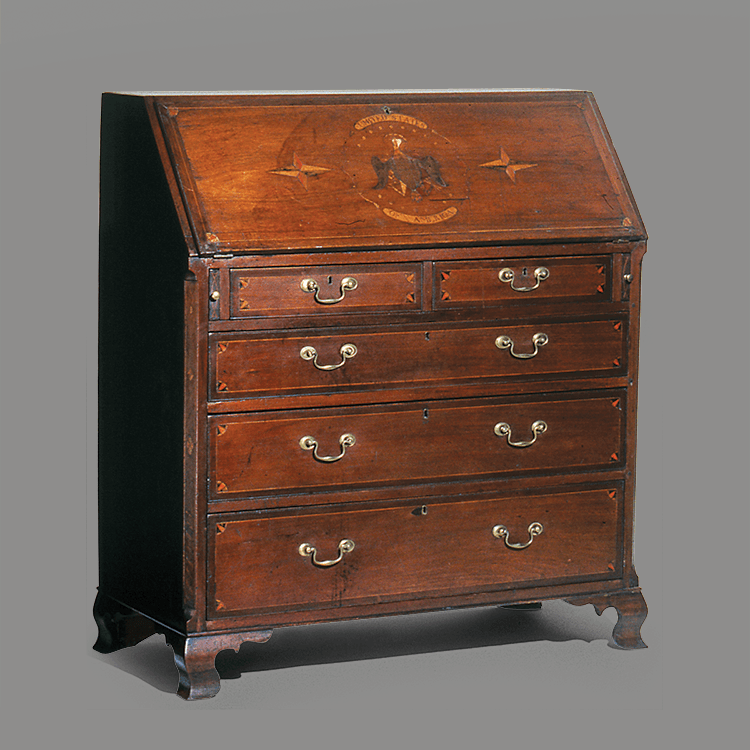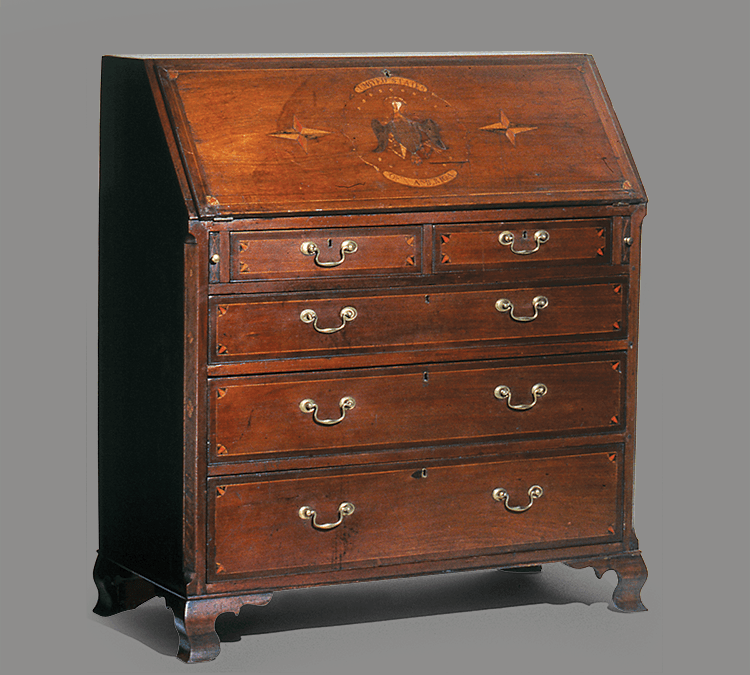Desk (Fall-front desk)

| Maker | Unknown |
| Date of Creation | 1808 |
| Location | Washington, Tennessee |
| Materials | Walnut, tulip poplar, brass |
| Institution | Winterthur Museum, Garden & Library |
| Credit Line | Bequest of Henry Francis du Pont |
| Accession Number | 1957.1099 |
| Photo Credit | Winterthur Museum, Garden & Library |
Made from walnut and tulip poplar, and embellished with exuberant inlay highlighted with red and green paint, this fall-front desk characterizes the aspirations, patriotic sentiment, and aesthetic sensibility of migrants to eastern Tennessee in the early 19th century. Framed by 17 stars, the spread-wing eagle inlayed in the fall front grasps stylized olive branches in its talons and a snake in its beak. Inside the desk, a silhouette profile of a gentleman is inlaid in the prospect door surrounded by the incised inscription “Liberty” and “1808.” Although it has been suggested that the silhouette depicts President James Madison (elected in 1808), it is more likely that of the original owner. The 17 stars represent the seventeens states that had been admitted to the Union by 1808. This desk is attributed to Washington County, TN cabinetmaker Hugh McAdams (1772–1814) and relates to other examples of Tennessee case furniture decorated with similar inlay, including silhouette profiles. An 1815 inventory of McAdams’ woodworking tools and supplies included a physiognotrace used for producing these likenesses.
Hugh McAdams may have been born in Pennsylvania or western North Carolina; in 1790, he was probably living with his parents in Rutherford County, NC (a portion of which was later partitioned to Tennessee). No details are known about his training. By 1800, he had acquired land in the Nolichucky River Valley of eastern Tennessee, married, and established a cabinetmaking shop on the banks of Big Limestone Creek near Jonesborough, the seat of Washington County. In addition to cabinetmaking, he farmed a large tract with the help of two enslaved laborers. While serving as sergeant of a unit in the 5th Regiment of the East Tennessee Militia during the War of 1812, he may have caught a fatal contagion during a campaign in Mobile, AL.

